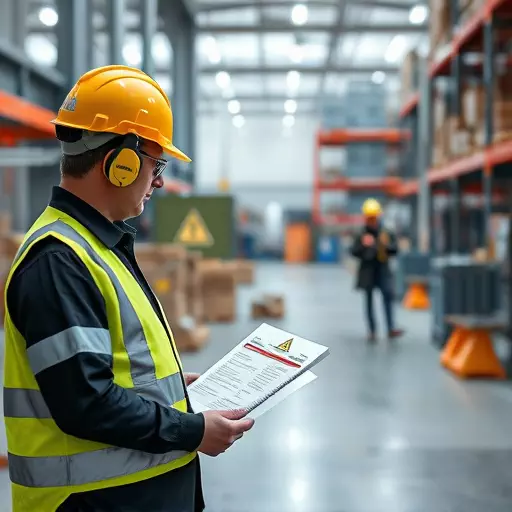Onsite Environmental Health and Safety (EHS) services are crucial for maintaining air quality and worker well-being. These experts conduct comprehensive audits, identifying hazards like chemical exposure and poor ventilation, while measuring air pollutants using advanced technology. Regular monitoring and audits ensure environmental compliance, create safer workplaces, enhance productivity, and boost employee satisfaction by enabling proactive risk mitigation strategies based on data from hazard identification and risk assessment.
Air quality monitoring is a vital aspect of ensuring a safe and healthy environment, both indoors and outdoors. In today’s world, understanding air quality involves more than just checking pollution levels; it requires a comprehensive approach that integrates various specialized services. Onsite EHS (Environmental Health & Safety) services play a crucial role in this process, offering expertise in workplace safety audits and air quality assessment. This article explores these key elements, focusing on hazard identification and risk assessment as a holistic method for managing air quality effectively.
- Understanding Air Quality Monitoring: The Role of Onsite EHS Services
- Integrating Workplace Safety Audits with Air Quality Assessment
- Hazard Identification and Risk Assessment: A Comprehensive Approach to Air Quality Management
Understanding Air Quality Monitoring: The Role of Onsite EHS Services

Air quality monitoring is a critical process that ensures the well-being of individuals in various settings, from homes to workplaces. Onsite Environmental Health and Safety (EHS) services play a pivotal role in this domain. These experts are equipped with the knowledge and tools to conduct thorough assessments, focusing on hazard identification and risk assessment. By performing workplace safety audits, they can uncover potential air quality issues that might go unnoticed otherwise.
Onsite EHS professionals use advanced technology and methods to measure and analyze air pollutants, including particles, gases, and volatile organic compounds. This data is essential for implementing effective mitigation strategies. Through regular monitoring and audits, these services help organizations maintain compliance with environmental regulations and create healthier, safer workplaces, thereby enhancing overall productivity and employee satisfaction.
Integrating Workplace Safety Audits with Air Quality Assessment

Integrating workplace safety audits with air quality assessment is a strategic approach that enhances overall environmental health and employee well-being. Onsite EHS services play a pivotal role in combining these two critical processes. By conducting thorough workplace safety audits, experts can identify potential hazards and risks within a work environment. This involves evaluating factors such as chemical exposure, noise levels, and indoor air pollutants. Simultaneously, they can assess the quality of air, ensuring it meets regulatory standards and is safe for occupants.
This integrated process allows for a comprehensive understanding of the workplace’s unique challenges. Hazard identification and risk assessment are key components, enabling employers to take proactive measures. For instance, if an audit reveals poor ventilation leading to elevated particulate matter, necessary steps can be taken to mitigate this risk, ensuring air quality standards are maintained and potential health issues among employees are prevented.
Hazard Identification and Risk Assessment: A Comprehensive Approach to Air Quality Management

Air quality monitoring is a critical component of environmental health and safety (EHS) management, particularly when ensuring workplace safety. A comprehensive approach to air quality control begins with thorough hazard identification and risk assessment. This process involves systematically identifying potential hazards present in the work environment, whether they are chemical, physical, or biological agents. Once these hazards are pinpointed, a risk assessment is conducted to evaluate the likelihood and severity of potential harm to workers’ health.
Onsite EHS services play a pivotal role here by facilitating workplace safety audits that scrutinize air quality and identify risks. These audits consider exposure limits set by regulatory bodies and employ scientific methods to quantify and qualify air pollutants. By integrating hazard identification, risk assessment, and onsite monitoring through professional EHS services, organizations can establish effective strategies for managing and mitigating air-related risks, fostering a safer workplace environment.


